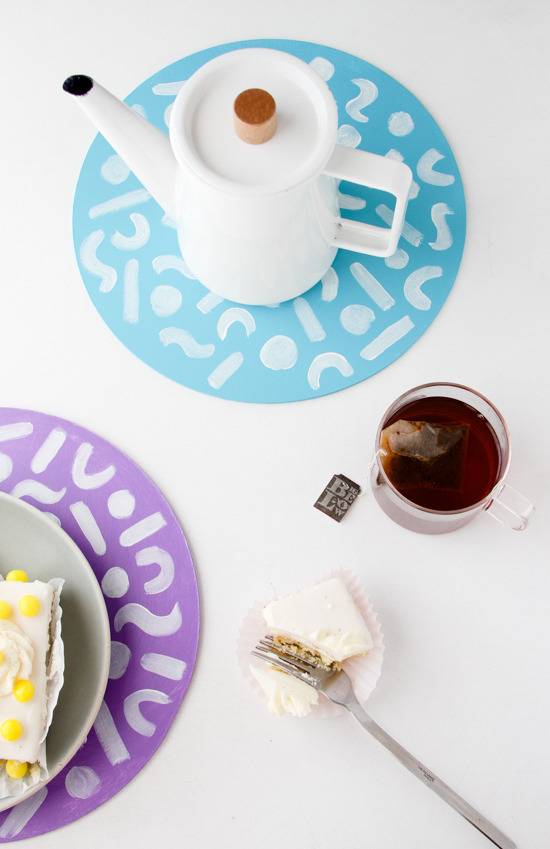Brittni Mehlhoff
I’ve had these scrap pieces of masonite for quite some time now. So I thought I’d turn them into something useful, by making these round, decorative trivets. FYI, this project does involve power tools, but there’s a way around that if you don’t feel comfortable using a bandsaw or jigsaw. So be sure to check it out, even if you’re not a power tool pro.
 Brittni Mehlhoff
Brittni Mehlhoff
I’ve been using these trivets in the kitchen and dining room, to protect surfaces (like our dining room table) from direct contact with hot pots, pans, and containers. And it works great. So, if you’ve been wanting to add a functional piece that also adds a pop of color, check out the tutorial below.
 Brittni Mehlhoff
Brittni Mehlhoff
Here’s how to make your own circular trivets from scrap wood or masonite…
Materials:
- Scrap wood or masonite
- Sandpaper
- Paint brush (one wide bristle and one smaller brush)
- Acrylic paint in colors of your choice and primer or gesso
- Wood glue or wood filler
How-To:
1. Using a bandsaw, cut a circle that is anywhere from 4 inches in diameter to 12 inches in diameter. The size of the circle completely depends on your preference for the size of the finished trivet. This video tutorial will walk you through the process of cutting a circle with a bandsaw. And if you’d prefer to use a jigsaw, check out this video.
*If you don’t have access to power tools or don’t feel comfortable using them, you can purchase pre-cut wood circles here, in various sizes. These are the same wood circles I used for my 3D wall art project from a while back. They aren’t very thick though, so I would recommend gluing two of them together with wood glue to create one trivet.
2. Once the circle has been cut, you’ll need to fill the hole left from the bandsaw. You can use wood glue or wood filler to fill the hole. Wait for the glue or filler to dry according to directions on the packaging, then sand the area to smooth out the surface again. *If you’re using a jigsaw or buying pre-cut circles, skip this step.
3. Next, it’s time to start painting. I would recommend using a primer or gesso as the first layer or two. This will help give you fuller coverage, so you’ll have less coats of paints to worry about later.
4. Once the primer or gesso is dry, paint a layer of solid color on top and wait for the paint to dry. Add another coat of paint if necessary and wait for the paint to dry again.
5. Next, it’s time to paint a fun pattern in a contrasting color, with a smaller brush. The inspiration for my trivet patterns came from designer, Ellen Van Dusen (founder of DUSENDUSEN). Allow the paint to dry and add a topcoat or sealant. Then it’s ready to use.
 Brittni Mehlhoff
Brittni Mehlhoff
You can easily customize this idea to your tastes, as far as pattern and color are concerned And depending on the size of your circle, you may also be able to use these as chargers for dinner parties or even as a minimal tray, if you add little feet and/or handles.
 Brittni Mehlhoff
Brittni Mehlhoff
 Brittni Mehlhoff
Brittni Mehlhoff
 Brittni Mehlhoff
Brittni Mehlhoff
 Brittni Mehlhoff
Brittni Mehlhoff
Think you’ll make a set of these DIY trivets for your kitchen and dining room? What pattern or colors do you think you’d use?
